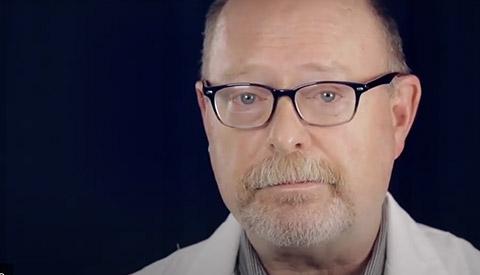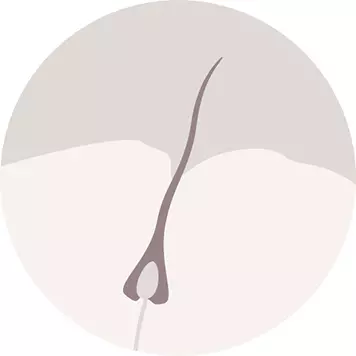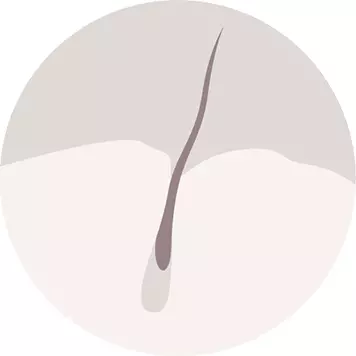
The causes of women’s hair loss are as diverse as their treatment options. When a woman’s hair starts to thin or shed, it’s vital to pinpoint the specific cause. Dr. Gray is an especially valuable resource for women with thinning hair because he’s a longtime medical professional who takes a clinical approach to hair loss. Every recommended solution at the Hair Transplant & Restoration Center is designed to treat a specific cause of women’s hair loss. There’s no trial and error here. Dr. Gray begins with definitive diagnosis and will support you throughout the course of your hair loss treatment.
Female Pattern Hair Loss (FPHL)
Women are usually familiar with androgenetic alopecia because it causes at least 90% of men’s hair loss. Few women realize that a similar hereditary condition causes hair loss for women. The exact mechanism of inherited Female Pattern Hair Loss (FPHL) is not as clear as it is for men’s androgenetic alopecia, which is caused by DHT. The pattern of hair loss is also different for women in that hair tends to become very thin over the vertex and crown while maintaining the frontal hairline. However, the end result is similar.
Hair starts to thin when follicles miniaturize, and if the FPHL goes untreated, genetically vulnerable hair follicles will eventually stop producing hair. Leaving the scalp exposed. For women genuinely affected by female pattern hair loss, FDA-approved treatments can deliver significant results. It is very important to seek help before significant alopecia is present so that you have more options.
Progression of Female Patterned Hair Loss (FPHL) in Women



Female pattern baldness follows a predictable pattern, but it’s different than its male counterpart. For women, progressive hair loss starts with thinning at the top of the scalp. The hairline is preserved while hair loss widens over the top of the scalp, starting at the center of the head. As opposed to the hair loss pattern in men, in which there is usually a preserved area in the occipital and lateral regions for donor hair, some females often have a more generalized thinning of hair, not leaving a large amount of available hair for transplantation.
Hair grows in 3 stages
Although shedding can be a component of FPHL, especially in its early stages, shedding is not the main problem in genetic hair loss. The main problem in FPHL is related to two things: follicles undergo miniaturization, and the anagen phase becomes shortened. Both of these problems worsen over time: the follicular diameters get smaller and smaller with each cycle of hair growth, and the growing or anagen phase becomes shorter with each cycle.

Phase 1: Anagen
Hair is actively growing when it’s in the anagen phase.

Phase 2: Catagen
Catagen is a transition stage lasting just two or three weeks. During this phase, the root pulls away from the follicle, preventing the growth of new cells. About 3% of your hair should be in the catagen phase at any one time.

Phase 3: Telogen
Telogen hairs should make up less than 10% of the hairs on your head. With FPHL, follicles stay in the telogen phase longer. These club hairs are finished growing, and they simply stay in place until they’re shed. You will normally shed about 100 telogen hairs a day.
Other Causes of Hair Loss in Women
Often, women’s hair loss can’t be blamed on a single condition. Although genetic hair loss is the primary cause, it is just one of many causes. Pinpointing the specific cause or causes is the first step toward finding a successful solution.
Non-genetic causes of women’s hair loss include:
- Hormone Changes
- Thyroid Disorders
- Nutrition Problems
- Childbirth
- Trichotillomania
- Other Cicatricial (Scarring) Alopecias
- Trauma
- Medications
- Stress
Medical Hair Loss
Women’s hair loss is often caused by conditions that effect more than just the hair. Medical causes of hair loss can include prescription medication, conditions including Lupus and PCOS, or treatments like radiation and chemotherapy. If you have an upcoming treatment that may cause you to lose your hair, contact the Hair Transplant & Restoration Center as early as possible so that Dr. Gray can help you plan for every stage in the process. Medical hair loss is a difficult experience, but you don’t have to go through it alone.
Scarring Alopecia
Scarring alopecia is an inflammatory process, centered around the stem cells and sebaceous gland, that kills the hair follicles. If new follicles are transplanted into the affected area, the new follicles will succumb to the same process and die. Before transplantation can be considered, the cause of scarring alopecia must first be treated. Years of treatment can be required to ensure that the scarring will not return. During treatment of the alopecia, a Cesare Ragazzi custom hair system can be used to maintain the appearance of full, healthy hair.
Non-Scarring Alopecia
When the etiology of women’s hair loss is a non-scarring alopecia (other than androgenetic alopecia), hormones or nutritional issues may be to blame, although alopecia areata may also be present. If these underlying issues are treated and stabilized a transplant can be considered. If hair loss is resulting from a medication or stress, then Dr. Gray can address the problem factors and use non-surgical solutions to support new hair growth. A transplant may be considered if the non-scarring alopecia is from normal hair loss due to genetic sensitivity or from androgenetic alopecia after menopause.
Female Hair Transplants
Not all female hair loss can be solved with transplants. The two general classes of alopecia (hair loss) are scarring and non-scarring, and the process of deciphering between the two frequently calls for a biopsy of the scalp to determine the diagnosis.
Answers are empowering. When you know the cause of your hair loss, you can take action. Dr. Gray is here to help you find real answers to women’s hair loss. Schedule your consultation today.
Discover What’s Causing Your Hair Loss
Women never wish for hair loss, but it can happen regardless. But you don’t have to give hair loss the final say. You can take decisive action to maintain your appearance, your full head of hair, and your sense of self-confidence. Join us at HT&RC to discuss potential solutions. One of the first things we’ll do is talk to you about your history of hair loss, and help you identify some of the potential causes of your thinning hair. From there, we can tailor a solution to fit your needs. Contact us today to schedule an appointment in our Macon, GA office space.





